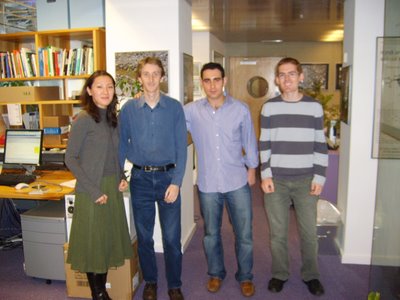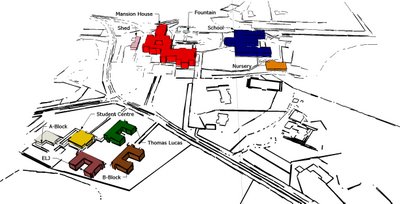Ecological perception: A few words on Gibson's theory and possible relation to visual impairment research
Whereas the representation and enrichment approaches drew heavily from the Cartesian dualist notion of perception and cognition (perception as a momentary stimulation of a set of sensory receptors separated from but complemented by a higher order cognitive processes), the ecological approach departs from an evolutionary perspective (Heft, 1997). For James J. Gibson, the father of ecological theory, the environment and the animal are inseparable - the existence of one implies the existence of the other. Mental processing and concepts of storage, enrichment and retrieval are replaced for relational and reciprocal links between the individual and the environment. The perceptual system has evolved in relation to the animal’s econiche and for this reason the study of human perception is relational and should begin with the environment and its reciprocity with the individual rather than how the individual perceives.
The ecological approach holds that perception is direct and present at birth. Perception is a bottom up process that depends on direct detection with no recourse to retinal, neural or mental pictures. That is, perception is not mediated by assumptions, preconceptions, expectations or mental images. Gibson believed that perception is designed for action. The process of information pickup “involves the exploratory activity of looking around, getting around and looking at things” (Gibson, 1986, pp. 147). Individuals perceive in order to operate in the environment and this perception is based on affordances or possibilities for action provided by the environment. The different sensory modalities are in themselves capable to pick up and make sense of change and invariance in the environment. Information is picked up through a process of resonance, similar to a radio, where individuals tune themselves to the environment. The process of storage and retrieval of information is erroneous since information is always available. To perceive is to be aware of the surfaces in the environment.
Affordances are picked up from the invariant characteristics of the environment and are detected depending on the perceiver’s species and current psychological state. They consign meaning to objects (Goldstein, 1981) and are directly perceivable. The concept of affordances is crucial to Gibson’s theory as it allows him to reject the more conventional notion that meaning is stored in long-term memory. Taking an evolutionary stand Gibson believed that a considerable amount of perceptual learning had already taken place throughout history making it not a necessity during a person’s lifetime. In proposing the notion of affordances Gibson shifts the focus to the environment by claiming that all that is needed to make sense of the environment is directly present (Eysenck & Keane, 1990). Learning consists of the improvement of perceiving and is mediated by practice and the education of attention not memory.
Gibson is said to have implemented the temporal element in perception (Eysenck & Keane, 2005). However, his focus was not on time per se but on cycles, sequences, events and changes. Events are the primary realities and time is filled with events. The bulk of Gibson’s theory can be said to revolve around the information acquired through persistence under change. In this sense, ecological perception focuses exclusively on the reciprocity of the concepts of variance and invariance - how information is picked up by the interplay of locomotion and the non-changes. It is worth noting that for the most part the theory is concerned with of optic flow information and the kinaesthetic quality of vision. Events cause “disturbances” in the invariant structure of the optical array (different types of events causing different types of disturbances). Goal-oriented locomotion depends on sequential optical array information and the reciprocal interplay between the variant and invariant structures of the environment. Locomotion is guided by locating the invariant features that specify a destination and by keeping focus of the optical outflow towards the destination.
The theory also accounts for the role of perceptual systems other than vision. The body in motion and proprioception are seen as important sources of stimulus information to vision and the other senses. Gibson criticized the Gestalt notion that the senses pick up individual information that is made to cohere during the process of perception. For Gibson, the senses were perceptual systems in themselves. Perceptual systems that are both propriosensitive and extereosensitive - self and environmental perception are complementary. Movement affords information about the environment and self that is multiple and concurrently gathered. The “individual not only sees himself, he hears his footsteps and his voice, he touches the floor…he feels his head turning, his muscles flexing, and his joints bending” (Gibson, 1986, pp. 115).
Gibson denied that wayfinding is mediated by a sequence of turning responses conditioned by stimuli (response chain theory) or by consulting an internal representation or map of the environment (cognitive mapping theory). He believes that the only appropriate way to understand wayfinding is through the theory of reversible occlusion. For this he introduces the concept of vistas and transitions. Vistas are defined as extended regions (semi-enclosures or a set of unhidden surfaces), a layout of environmental features presently visible, (Heft, 1996) that are serially connected, unique and reversible. Transitions are more salient and allude to parts of the path of travel where the individual can begin to capture the next vista. Moving from one place to another consist of “the opening up a of the vista ahead and closing in of the vista behind” (Gibson, 1986, 198). In this manner, to wayfind in an unknown environment consists of sequentially selecting from a choice of vistas, whose uniqueness can act as a landmark, presented by the environment. As follows place learning consists of learning the affordances of different places and learning how to distinguish among them.
In regards to this thesis, perhaps the most relevant feature of the theory is the notion perceptual information is primarily used in the organization action (Eysenck & Keane, 2005). Locomotion and manipulation are not triggered by stimuli outside the body or initiated by commands inside the brain but dependent on the active control of information and by seeing/perceiving oneself in the world. The individual is aware of the environment while actually moving through it. Although Gibson held that the control of information was predominantly visual he acknowledged that proper awareness could only be achieved through movement. To perceive “involves the coperceiving of the self “ (Gibson, 1986, pp. 240). The information for perception always comes in two – in relation to the environment and to the self. In this manner, exploration is assigned a crucial role in perception. Active (focus on active rather passive) exploration is required in order to separate invariants from variants and the eventual awareness of information. Exploration is what allows an observer to continuously learn about surfaces (their layout, substance, events and affordances) as perception itself becomes finer, richer and fuller as one explores (Mace, 2005).
In a series of experiments on the role of vistas and transitions in wayfinding, Heft (1983) was able to show that in route learning, transitions (or periods of saliency maximal change in the perspective structure) are more important than vistas. Participants who viewed a movie consisting only of continuous transitions in a particular route were particularly attuned in their detection and performed significantly better in route retracing exercise when compared to those who viewed a movie consisting only of vistas. This is of particular value for perception in the total or partial absence of vision for two reasons: First, transitions unlike vistas do not necessarily need to be visual. A transition can be a particular intersection in a street network that can be detected by a change in curvature orientation. Furthermore, the concept of successive transition implies some form of structure or hierarchy. Wayfinding is inevitably temporal and can be described as navigation within “a nested hierarchy that unfolds over time (Heft, 1996, pp. 122). Notice here that the basis of wayfinding is not a mental representation but the access or presence of sequential information.
It may seem strange to devote so much attention to Gibson’s theory considering it is almost entirely based on visual information. Nonetheless, the notion of action, locomotion and temporally structured navigation has important implications for wayfinding in the total or partial absence of vision as blind and visually impaired individuals are forced to move in order to perceive. It is the reciprocity of information and action that allows for the continuous updating and orientating necessary for accurate navigation. Instead of a succession of vistas (although navigation using continuous vistas is still plausible in the partial absence of vision) the blind or visually impaired individual can use a proprioceptive/environmental (action/perception) loop system based on transitions. With the risk of extrapolation, what we want extract from Gibson’s ecological theory is the inseparability of the individual and the environment and the active perception of reality through succession or successive situation transitions (Heft, 1996). The difference lies on the idea that information is controlled via proprioception and the operation of the other senses. This is in tune with the Gibsonian notion of perceptual systems where information is redundant and concurrently gathered. As we shall see on the following chapters much of Carreiras and Codina (1992) and Susanna Millar (1994) amodal theories of spatial coding are based on these assumptions.
The ecological approach differs substantially from the traditional approaches in that it rejects the notion of input processing in perception. Its relevance to perceptual psychology however, is undeniable. First, it allowed for a consideration of direct perception by showing that a considerable amount of information about the environment can be directly perceived. The approach also links perception to locomotion rather than the static viewing of stimuli, as it is through the moment-to-moment changes in the optic array that one makes sense of the world.
There are some limitations to this approach. First, while Gibson acknowledges that supplementary information about movement can be picked up by the haptic system he still held the extreme view that locomotion is strictly registered by vision in that the visual system yields the only reliable information regarding displacement (Gibson, 1986, pp. 126). As we shall see, there is a considerable amount of useful wayfinding information that can be assembled through muscle memory or proprioception. Second the theory has also been criticized by the manner in which he treats meaning in perception. Although Gibson went through great lengths in discussion of affordances it is hard to believe that stored knowledge in long-term memory does not play a role (even if minor) in recognition and perception. For an in depth criticism of Gibson’s representation free theory please refer Fodor & Pylyshyn (1981).
Gibson has also often been criticized by the lack of experimental evidence to support his theory. If fact most of the experiments reported in his work are his own. In addition, the actual design of experiments to study the role of invariants can be very complex and have only recently been taken up by researchers (Goldstein, 1981). Finally, perhaps the biggest flaw is Gibson theory is the ineffective almost nonchalant manner in which he deals with the acquisition of configurational or global knowledge of an environment. He believed that the control and organization of vistas through exploratory locomotion would eventually lead for the whole of the habitat to be apprehended. This “complete” apprehension was equivalent not necessarily to a bird’s eye view of the environment but to being everywhere at once. As we have already seen and as it will be continually argued, it seems hard to deny, irrespective to which representational or constructivist theory we adhere to, that at least some part of the formation of configurational knowledge depends on cognitive processes that make sense of discontinuous perceptual encounters.



